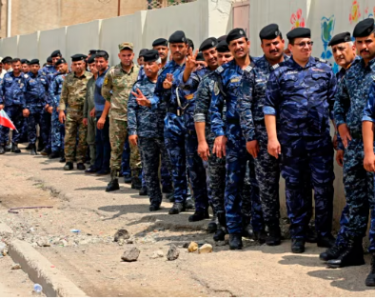GAZA, Apr 30 (NNN-XINHUA) – In Tal al-Hawa, west of Gaza City, Akram Abu Khosa, a 49-year-old Palestinian farmer, often sits quietly on his damaged balcony. With his smartphone in hand, he scrolls through photos and videos of his once-vibrant strawberry fields.
“Just two years ago, I would breathe the fresh air every morning, amidst the fields. But now, I am forced to look at the devastation around me and remember my farm only through videos and photos,” the father of six told Xinhua.
The family farm of Abu Khosa, was once a model of innovation. With the help of his brothers, he pioneered Gaza’s first hanging strawberry farm, producing nearly 37 tonnes of fruit annually.
“But now, the fields lie in ruins,” he lamented. Located just two kilometres from the Israeli border, the farm was among the first casualties of the war. Israeli strikes not only flattened the crops and greenhouses but also destroyed three family homes.
The Abu Khosa family, like tens of thousands of others, was displaced to southern Gaza and now shares a cramped apartment with 35 relatives. “During the 18 months of war, I have never stopped thinking about my land,” he said. “We survived on it, built our dignity on it. Now, I’m just trying to survive.”
Abu Khosa is among more than 55,000 farmers who lost their lands, due to the Israeli offensive, according to Mohammed Abu Oda, spokesperson for the Hamas-run Gaza agriculture authorities.
“Around 167,000 dunams (16,700 hectares) of farmland have been destroyed or damaged,” he told Xinhua, estimating direct agricultural losses at 326 million U.S. dollars.
“The sector used to produce 373 million dollars annually, and met nearly 60 percent of local food needs. Now, exports have halted completely, and local production can’t meet demand,” he added.
For farmers like Mahmoud al-Najjar from eastern Khan Younis, the war’s impact is not just financial; it’s existential.
His land, once green with cucumbers and okra, now lies scarred and unusable. “Every step I take on my land could be my last,” he said, referring to unexploded ordnance scattered across fields.
Still, he insists on planting, however small the harvest. “If we don’t plant, we don’t eat.”
Since Nov, 2023, his fields have been repeatedly shelled, and parts of them now remain inaccessible due to unexploded ordnance.
“Every visit is a gamble,” he said. Yet he returns often, scraping the soil for life. “Sometimes I sleep near the field just to guard it,” he said. “It’s not just farming. It’s resistance.”
Al-Najjar’s wife, Aisha, said, the family now depends on whatever he can carry back from the land.
“The kids cry from hunger, and he brings back a few bunches of herbs. It’s not enough, but it gives us hope,” she said.
In central Gaza’s Deir al-Balah, 63-year-old Fatima al-Saqqaf, a widow and grandmother, recalls her olive trees with deep affection.
Before the war, she managed a modest but productive grove with the help of her eldest sons. They produced olive oil, dried thyme, and pickled vegetables for local markets.
Now, her grove is unreachable. “It’s only six kilometres away, but it might as well be on the moon,” she said. “There are tanks, drones, and roads blown apart.”
Fatima now lives with her extended family in a tent near a UN distribution centre. Her grandchildren survive on food parcels from aid agencies.
“We used to send food to others. Now we wait in line for flour,” she said. “My hands itch to work the land again.”
In al-Bureij refugee camp in central Gaza, 34-year-old Moamen Salama had built a thriving tomato and bell pepper farm in plastic-covered greenhouses.
“We had two harvests a year, and our produce was sold across Gaza,” he told Xinhua. In Jan, an airstrike reduced the entire site to rubble.
“I had taken loans to expand. All that’s left now is debt,” Salama said. He tried planting in open soil, but the new crops failed because irrigation pipes were destroyed, and fuel was nearly impossible.
“I tried again after the truce in Jan, but when the bombing resumed in March, I gave up. It was like watching my future burn,” he added.
Salama’s wife, Rawan, said, their three children often ask why they can’t return to the farm. “They don’t understand war. They miss running between the plants,” she said.
Despite the devastation, pockets of hope remain. Local nongovernmental organisations and relief groups distribute seeds, compost, and hand tools to farmers who grow food in backyards and camp edges.
“You’d be surprised where vegetables can grow,” said Hassan Suleiman, a 27-year-old farmer from Beit Hanoun, who now cultivates mint and lettuce in buckets beside his tent in al-Mawasi. “It’s not much, but it reminds us that we are still here.”
Still, the challenges are overwhelming. Without fuel, fertilisers, or market access, Gaza’s agriculture risks collapse. “We are facing not just a humanitarian crisis, but a long-term threat to food sovereignty,” Suleiman said.
Back in Tal al-Hawa, Akram Abu Khosa clings to a distant vision of rebuilding. “One day, we’ll plant again,” he said, tapping his phone screen to replay a video of red strawberries dancing in the wind. “Even if I don’t live to see it, someone will.”– NNN-XINHUA






